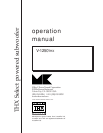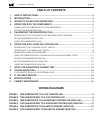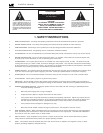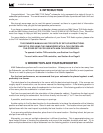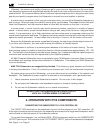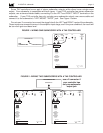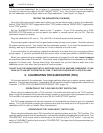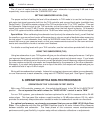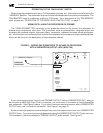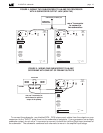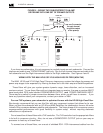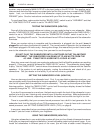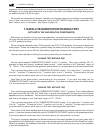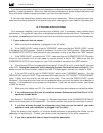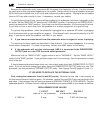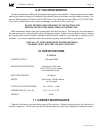
V-1250THX subwoofer page 5
Ultimately, the amount and quality of bass you get in your room are dependent on the room itself.
Low frequency bass sounds are affected most by the size of the room and the method of construction
used to build it. All rooms are different when it comes to reproducing bass, and in any given room, bass
quantity and quality changes when the Subwoofer is moved from one location to another.
A simple rule to remember is that you get more bass when you move the Subwoofer towards any
wall or corner. Moving it away from a wall or corner gives you less bass. Remember that the floor also
loads the Subwoofer, and that maximum bass is found with the woofer on the floor in a corner.
In some rooms, a corner location may excite resonance modes, resulting in a muddy or boomy
sound. In these rooms, a more central location along a wall, away from the corner, may give better
results. If you experiment, try to find a spot where no bass notes seem to overpower others and the
overall sound is powerful and clean. The goal is to achieve a smooth sound quality, with the entire bass
spectrum equally prominent. In most rooms this is directly in a corner, not the center of the room.
Because the Subwoofer generates a great deal of energy, its output may vibrate objects close to it.
If you hear such vibration, you may need to damp the vibration of nearby objects.
One Subwoofer is sufficient in a stereo system because of the nature of human hearing. The ear-
brain hearing system is unable to locate the direction of bass sounds below approximately 100 - 150
Hz. The direction of low frequency sounds (drums, basses, etc.) is determined by the higher frequency
overtones and harmonics that are reproduced by the Satellite speakers.
All M&K Powered Subwoofers have exceptionally sharp (36 dB/octave) low-pass filters to remove
the midbass and midrange frequencies unwanted in a Subwoofer. This makes your M&K Subwoofer
truly
non-directional.
M&K THX Subwoofers are magnetically shielded. This allows you great freedom and flexibility
in locating the subwoofer. Even if it is close to your television set, it will not interfere with the picture.
No matter where you put the Subwoofer, you must allow room for ventilation of its heatsink and
backplate. The Subwoofer's power amplifier is mounted on the backplate, and it generates heat.
1. Leave clearance around the Subwoofer's heatsink. Do not cover it with drapes.
2. Do not place the Subwoofer near baseboard heaters or forced air heating outlets.
3. Do not use the Subwoofer outdoors or in a humid environment.
DO NOT PLUG THE SUBWOOFER INTO AN AC OUTLET
UNTIL ALL SYSTEM WIRING IS COMPLETE
4. OPERATION WITH THX COMPONENTS
CONNECTING THE SUBWOOFER TO A THX CONTROLLER
The "INPUT" RCA terminals on the subwoofer connect it to the outputs of your THX controller. All
of the input connections and controls for the subwoofer are located on its large metal backplate, which
can be found on the back panel of the subwoofer cabinet.
To connect the subwoofer, run a shielded RCA - RCA interconnect cable from the SUBWOOFER
OUTPUT jack on your THX controller to the "LEFT/MONO" "INPUT" jack on the subwoofer's backplate.
See Figure 1 on Page 6.



